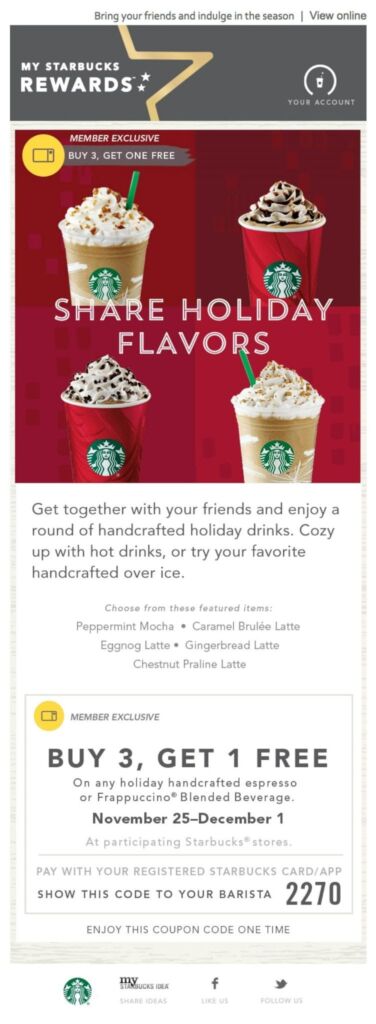
Last Updated on octubre 26, 2022 by anytimedigital
In today’s business world, email marketing is an essential tool for staying in touch with customers and prospects. However to be effective, email marketing must have a high conversion rate. Therefore, it must convert potential customers into paying ones. If you’re like most business owners, your inbox is constantly overflowing with new emails. In addition, you probably struggle to keep up with all of them. So how can you make sure your campaigns don’t get lost in the shuffle? By improving your email marketing conversion rates! In this blog post, we’ll share some tips on how to do just that.
1. Segment your email list to target specific customers
Email marketing lists can be segmented to target specific customers in a number of ways. This is an important part of your email marketing strategy as it allows you to send customized messages to your target audience. For example, you can break down your list by age, location, gender, or interests. Creating a segmented email marketing list is easy and can be done in a few simple steps. First, decide what criteria you want to use to segment your list. Then, create groups based on those criteria. For instance, those who are interested in the same product, or who have made a purchase from your company in the past. Finally, add customers to the appropriate groups.
Additionally, this segmentation will help you better understand your customers and what they are looking for from your business. Ultimately, segmenting your email list is an essential part of email marketing that will help improve your conversion rates.
2. Personalize your emails with the customer’s name
One of the key elements of email marketing is personalization by incorporating the customer’s name into the email content. This personal touch helps to build trust and rapport with the customer. And, it can significantly increase conversion rates. In fact, a study by Hubspot in 2021 found that message personalization (72%) is one of the most effective strategies for email marketing campaigns.
There are a few ways to personalize your emails. One common method is to simply add the customer’s name to the subject line. For example, “Thank you for your purchase, [NAME]!” You can also use the customer’s name in the email body, such as “We’re glad you’re part of the [NAME] family!” Furthermore, rather than starting with a generic greeting like “Hello,” you could start with “Hello [customer’s name]. Whatever method you choose, personalizing your emails is sure to help increase your conversion rates.
3. Make it easy for customers to unsubscribe from your list
Any email marketing campaign must include an easy way for customers to unsubscribe from the list. This is important for two reasons. First, it ensures that your customers have the ability to opt out of receiving email communications from you if they so choose. Second, it helps to keep your email list healthy by preventing people who don’t want to receive your emails from continuing to get them. This, in turn, can help to improve your deliverability rates and ensure that more of your emails end up in people’s inboxes.
You can add an unsubscribe option in a number of ways. One way is to include a link at the bottom of every email that says “unsubscribe.” In addition, you may include an unsubscribe form on your website that people can fill out if they want to be removed from your list. Whichever method you choose, make sure that it is prominently featured and easy for people to find.
CAN-SPAM Act
There are laws in place that require email marketers to include an unsubscribe option in all email communications. These laws exist to protect consumers from being forced to receive email communications that they don’t want. Therefore, if you don’t include this option in your email communications, you could get into some trouble with CAN-SPAM rules. The CAN-SPAM Act was created by congress in 2003 to address the problem of unwanted commercial electronic mail messages. The components of this act included an opt-out mechanism, the inclusion of the sender’s valid physical postal address. In addition, you should have the identification of the message as an advertisement or solicitation and non-deceptive subject lines.
4. Use attractive visuals and interesting content in your emails
By using visuals and interesting content, you can make your email stand out and increase the likelihood of conversion. For example, including an image along with a short piece of text can be more eye-catching than a long block of text. You can also use graphics, videos, or infographics to break up the email and add visual interest. Additionally, including a strong call-to-action (CTA) can also help increase conversions. In terms of content, including a personal story, asking a question, or providing helpful information in your email newsletters are all great examples. Here is a sample of a Starbucks email that promoted their holiday drinks to their subscribers.
There are a number of email marketing software programs that allow businesses to easily create and send these types of email campaigns. Some of the most popular email marketing software programs include MailChimp, Constant Contact, AWeber and GetResponse.
5. Test different subject lines to see which ones get the most opens
Email marketing is a great way to reach out to potential customers, but only if your email actually gets opened. By testing different subject lines, you can figure out what works best for your audience. In addition, it helps ensure that your email stands out in their inbox. For example, if you’re selling a new product, you might want to try a subject line like “Introducing the newest addition to our product line!” Or if you’re having a sale, you could try something like “Get 20% off your purchase!” Other examples of include using a question in the subject line or a number. You could also try personalizing the subject line with the recipient’s name.
There is something you must avoid when creating a subject line. You should never use deceptive subject lines to trick someone into opening your email. This is because it can lead to people unsubscribing from your list, or even marking your emails as spam. In addition, using deceptive subject lines can damage your reputation and make it difficult to build trust with your subscribers. Therefore, always be honest in your email marketing, and you’ll be more likely to succeed in the long run.
6. Send emails at the right time of day
An important detail that is often overlooked is the time of day that emails are sent. For example, if you have a customer in the Eastern Time Zone, sending an email at 9am EST will ensure that it’s seen when they’re checking their email in the morning. Similarly, if you have a customer in the Pacific Time Zone, sending an email at 6am PST will ensure that they see it early in the morning. Time zone conversions can be tricky, but there are many online tools that can help make sure you’re sending them at the right time.
Depending on your customer’s time zone, sending an email at the wrong time can mean that it gets lost in their inbox. In addition, they may see it too late to act on it. On the other hand, sending them at the right time can mean improved email marketing conversion rates. After all, if they see your email when they’re already in buying mode, they’re more likely to take action on it.
En conclusión


